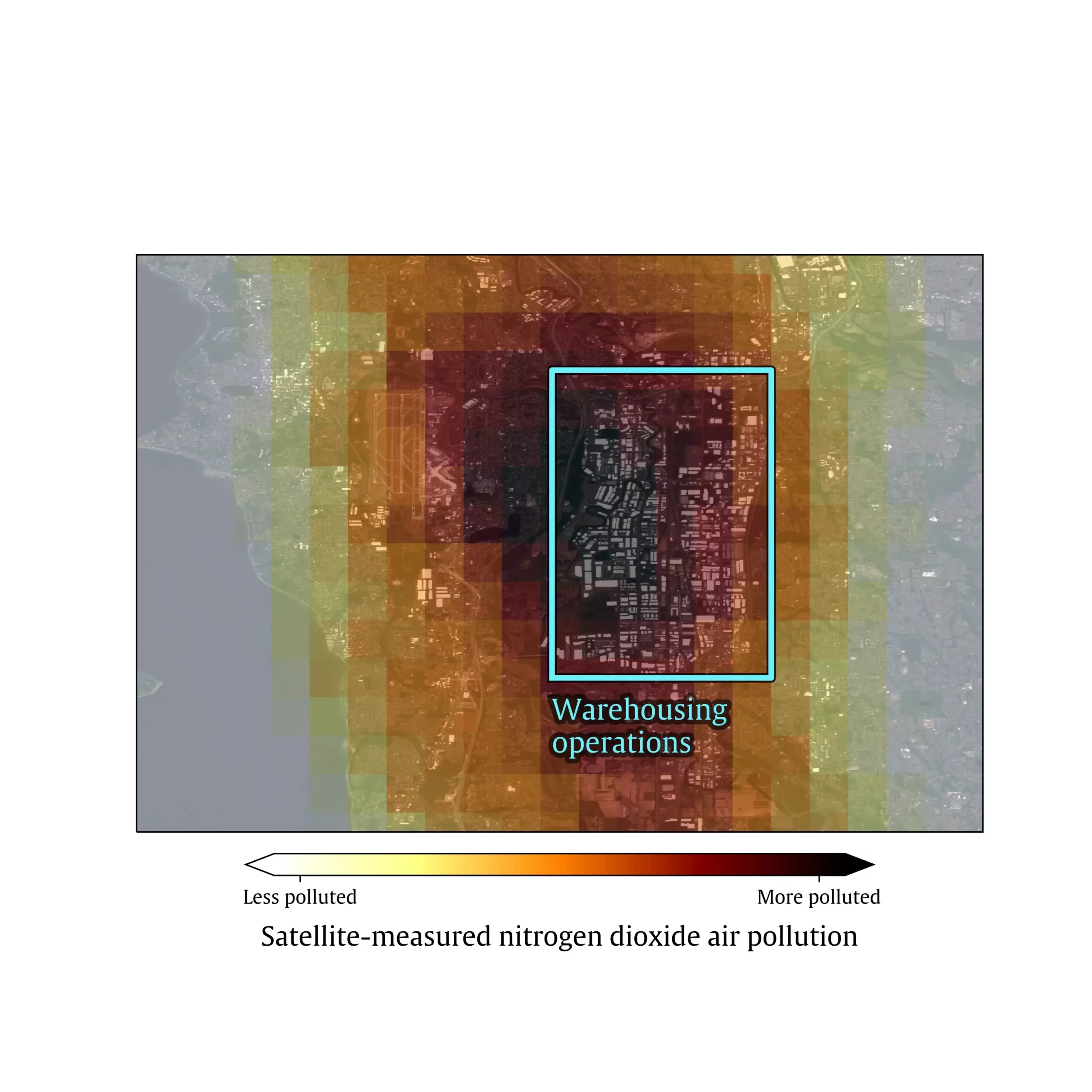The rise in demand for products being delivered directly to people’s doorsteps has led to a significant increase in e-commerce and the warehousing industry in the United States. However, a recent study reveals a darker side to this trend. According to the study titled “Air pollution impacts from warehousing in the United States uncovered with satellite data,” published in Nature Communications, communities situated near these large warehouses are experiencing a 20% increase in traffic-related air pollutants that can lead to severe health issues such as asthma. This study opens up a conversation about the environmental and health impacts of the growing warehousing industry on nearby residents.
The lead author of the study, Gaige Kerr, and his team used a satellite instrument to analyze nearly 150,000 large warehouses across the United States. They found that increased truck traffic to and from these warehouses is resulting in elevated levels of nitrogen dioxide pollution being emitted into the air. This pollution poses serious health risks to individuals living downwind of these warehouses, particularly communities of color who are disproportionately affected due to their close proximity to these industrial facilities. The study also uncovered some key findings:
– Warehouses with larger numbers of loading docks and parking spaces tend to attract more heavy-duty vehicle traffic, leading to higher levels of nitrogen dioxide emissions.
– Communities with a high population of racial and ethnic minorities are often located near warehouses, exposing them to higher levels of pollutants compared to predominantly non-Hispanic white communities.
– While warehouses are dispersed all over the country, 20% of them are concentrated in just 10 counties, including Los Angeles, California; Harris, Texas; Cook, Illinois; and others.
The COVID-19 pandemic further fueled the growth of the e-commerce industry, resulting in an increased demand for warehouses to store and process consumer goods. This surge in online shopping also necessitated a massive transportation infrastructure to deliver goods from warehouses to consumers. For instance, industry giant Amazon alone operated 175,000 delivery vans and over 37,000 semi-trailers in 2021. While previous studies have examined air quality issues related to warehouses in specific neighborhoods, this study is the first nationwide analysis highlighting the heightened exposure to harmful pollutants faced by residents near these industrial sites.
The study emphasizes the need for regulations that promote the use of zero-emission vehicles in logistics to protect vulnerable communities living in close proximity to industrial hubs. Kerr and his colleagues point out that industry leaders and utilities play a critical role in driving and implementing this transition towards cleaner transportation practices. By adopting environmentally friendly measures, such as transitioning to zero-emission vehicles, communities near warehouses could benefit from improved air quality and reduced health risks associated with exposure to harmful pollutants.
The findings of this study shed light on the environmental and health implications of the booming warehousing industry in the United States. It underscores the importance of addressing air pollution inequities and implementing sustainable practices to protect the well-being of communities living near these industrial facilities. By prioritizing environmental regulations and adopting cleaner transportation technologies, we can work towards creating a healthier and more sustainable future for all.


Leave a Reply